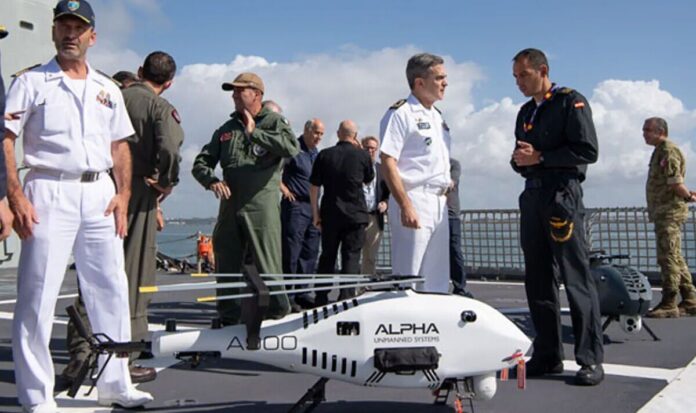NATO unleashes underwater drones off the coast of Europe in bid to ‘deter’ Vladimir Putin (Image: Getty Images/AMMO Ukraine) NATO is testing highly sophisticated sea drones off the coast of Europe in a bid to deter Russia and other potential aggressors from mounting underwater attacks. Fourteen members of the alliance, along with Sweden, are conducting joint exercises over 12 days off the cost of Portugal to test underwater sea drones that are capable of deploying a real-time “deterrence signal to the enemy, be it Russia or somebody else”, said Lt. Gen. Hans-Werner Wiermann, head of NATO’s cell for protecting undersea infrastructure, according to a Bloomberg report. The exercises, dubbed Dynamic Messenger 23 and Robotic Experimentation and Prototyping with Maritime Unmanned Systems (REPMUS 23), will marshal 2,000 civilians amid military personnel with the explicit aim of integrating maritime unmanned systems into the alliance’s operations and test new technologies that are currently under development. The impetus behind the joint exercise was the explosions that rocked the Nord Stream 1 and 2 pipelines in the Baltic Sea back last year. NATO: The underwater sea drones that are capable of deploying a real-time ‘deterrence signal’ (Image: NATO ) Many members of the alliance pointed the finger at Russia but NATO has yet to formally assign responsibility to any nation or organization. The attacks nonetheless exposed a weak spot in NATO’s ability to protect critical underwater infrastructure. According to the report, one particular area of disquiet is underwater cables that carry roughly $10trillion worth of financial transactions daily and about 95 percent of global internet traffic. What’s more, roughly two thirds of the world’s oil and gas is either extracted or transported by sea, oftentimes via pipelines that are thousands of miles long deep below the surface of the sea, making such infrastructure hard to monitor for threats. To remedy this oversight, Nato is now taking part in dynamic war games. Wake up: The impetus behind the joint exercise was the explosions that rocked Nord Stream pipelines (Image: Getty Images) In one exercise aimed at stopping such an attack, NATO vessels responded to the use of a state-sponsored commercial vessel attempting to disrupt underwater network cables, a plot that would typically be difficult to detect. Fiber-optic sensors on the cables were able to detect that the fictitious enemy ship was attempting to delay an underwater drone, relaying the information to NATO’s command and control chain. After the threat was confirmed, NATO responded by sending a fleet of aerial, surface and underwater drones to intercept the threat and escort the suspicious vessel out of the area. The training comes hot on the heels of an earlier move this year to create a new maritime command center focused on defending underwater infrastructure in the United Kingdom, with NATO agreeing to set up improved information sharing systems between members of the alliance and partners in the private sector to help better detect and deter attacks on infrastructure. As Wiermann puts it, the Nord Stream explosions raised alarm bells and sparked an extensive audit of nearly 6,000 miles of pipelines. “They did it, but it cost them a fortune. And they don’t want to do this necessarily again,” Wiermann told Bloomberg. “We want to have the speediest information exchange between the actors as possible because if we want to detect suspicious behavior in real time, we have to act very quickly.” Follow our social media accounts here on facebook.com/ExpressUSNews and @expressusnews
NATO unleashes underwater drones off the coast of Europe to ‘deter’ Putin
Sourceexpress.co.uk
RELATED ARTICLES


